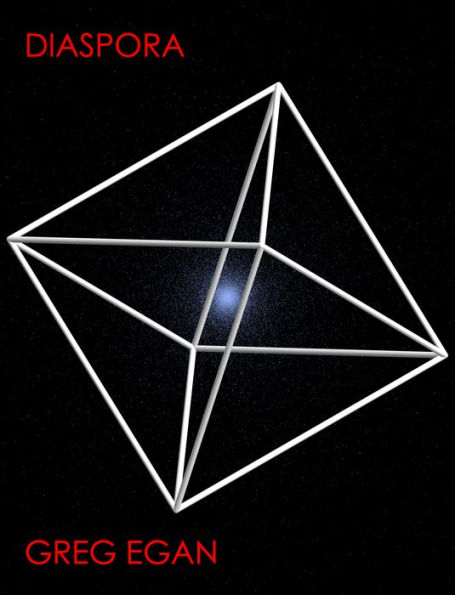Read an Excerpt
Chapter One
Orphanogenesis
Konishi polis, Earth
23 387 025 000 000 CST
15 May 2975,11:03:17.154 UT
The conceptory was non-sentient software, as ancient as Konishi polis itself. Its main purpose was to enable the citizens of the polis to create offspring: a child of one parent, or two, or twenty — formed partly in their own image, partly according to their wishes, and partly by chance. Sporadically, though, every teratau or so, the conceptory created a citizen with no parents at all.
In Konishi, every home-born citizen was grown from a mind seed, a string of instruction codes like a digital genome. The first mind seeds had been translated from DNA nine centuries before, when the polis founders had invented the Shaper programming language to re-create the essential processes of neuroembryology in software. But any such translation was necessarily imperfect, glossing over the biochemical details in favor of broad, functional equivalence, and the full diversity of the flesher genome could not be brought through intact. Starting from a diminished trait pool, with the old DNA-based maps rendered obsolete, it was crucial for the conceptory to chart the consequences of new variations to the mind seed. To eschew all change would be to risk stagnation; to embrace it recklessly would be to endanger the sanity of every child.
The Konishi mind seed was divided into a billion fields: short segments, six bits long, each containing a simple instruction code. Sequences of a few dozen instructions comprised shapers: the basicsubprograms employed during psychogenesis. The effects of untried mutations on fifteen million interacting shapers could rarely be predicted in advance; in most cases, the only reliable method would have been to perform every computation that the altered seed itself would have performed...which was no different from going ahead and growing the seed, creating the mind, predicting nothing.
The conceptory's accumulated knowledge of its craft took the form of a collection of annotated maps of the Konishi mind seed. The highest-level maps were elaborate, multidimensional structures, dwarfing the seed itself by orders of magnitude. But there was one simple map which the citizens of Konishi had used to gauge the conceptory's progress over the centuries; it showed the billion fields as lines of latitude, and the sixty-four possible instruction codes as meridians. Any individual seed could be thought of as a path which zig-zagged down the map from top to bottom, singling out an instruction code for every field along the way.
Where it was known that only one code could lead to successful psychogenesis, every route on the map converged on a lone island or a narrow isthmus, ocher against ocean blue. These infrastructure fields built the basic mental architecture every citizen had in common, shaping both the mind's overarching design and the fine details of vital subsystems.
Elsewhere, the map recorded a spread of possibilities: a broad landmass, or a scattered archipelago. Trait fields offered a selection of codes, each with a known effect on the mind's detailed structure, with variations ranging from polar extremes of innate temperament or aesthetics down to minute differences in neural architecture less significant than the creases on a flesher's palm. They appeared in shades of green as wildly contrasting or as flatly indistinguishable as the traits themselves.
The remaining fields — where no changes to the seed had yet been tested, and no predictions could be made — were classified as indeterminate. Here, the one tried code, the known landmark, was shown as gray against white: a mountain peak protruding through a band of clouds which concealed everything to the east or west of it. No more detail could be resolved from afar; whatever lay beneath the clouds could only be discovered firsthand.
Whenever the conceptory created an orphan, it set all the benignly mutable trait fields to valid codes chosen at random, since there were no parents to mimic or please. Then it selected a thousand indeterminate fields, and treated them in much the same fashion: throwing a thousand quantum dice to choose a random path through terra incognita. Every orphan was an explorer, sent to map uncharted territory.
And every orphan was the uncharted territory itself. The conceptory placed the new orphan seed in the middle of the womb's memory, a single strand of information suspended in a vacuum of zeroes. The seed meant nothing to itself, alone, it might as well have been the last stream of Morse, fleeing through the void past a distant star. But the womb was a virtual machine designed to execute the seed's instructions, and a dozen more layers of software led down to the polis itself, a lattice of flickering molecular switches. A sequence of bits, a string of passive data, could do nothing, change nothing-but in the womb, the seed's meaning fell into perfect alignment with all the immutable rules of all the levels beneath it. Like a punched card fed into a jacquard loom, it ceased to be an abstract message and became a part of the machine.
A second wave was added — running askew to the first, modulated with a slow steady rise — carving each ridge into a series of ascending mounds. Then a third, and a fourth, each successive wave enriching the pattern, complicating and fracturing its symmetries: defining directions, building up gradients, establishing a hierarchy of scales.
Diaspora. Copyright © by Greg Egan. Reprinted by permission of HarperCollins Publishers, Inc. All rights reserved. Available now wherever books are sold.



